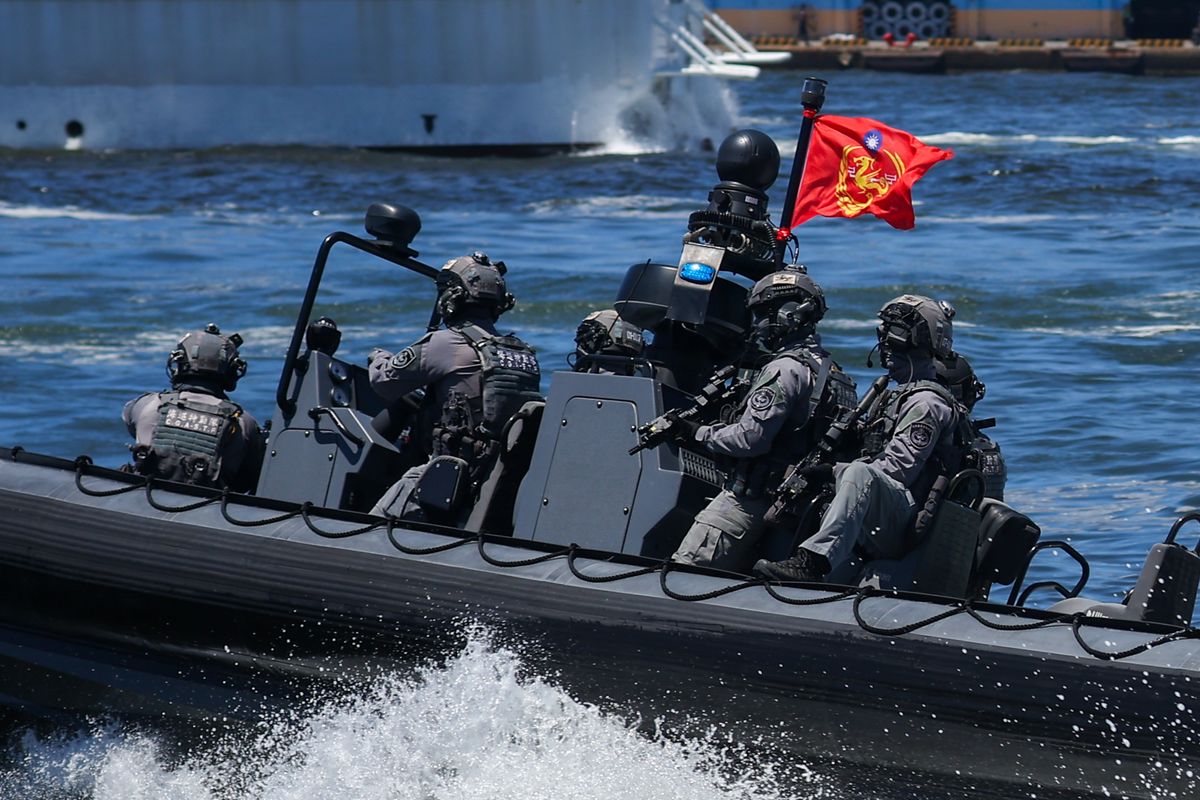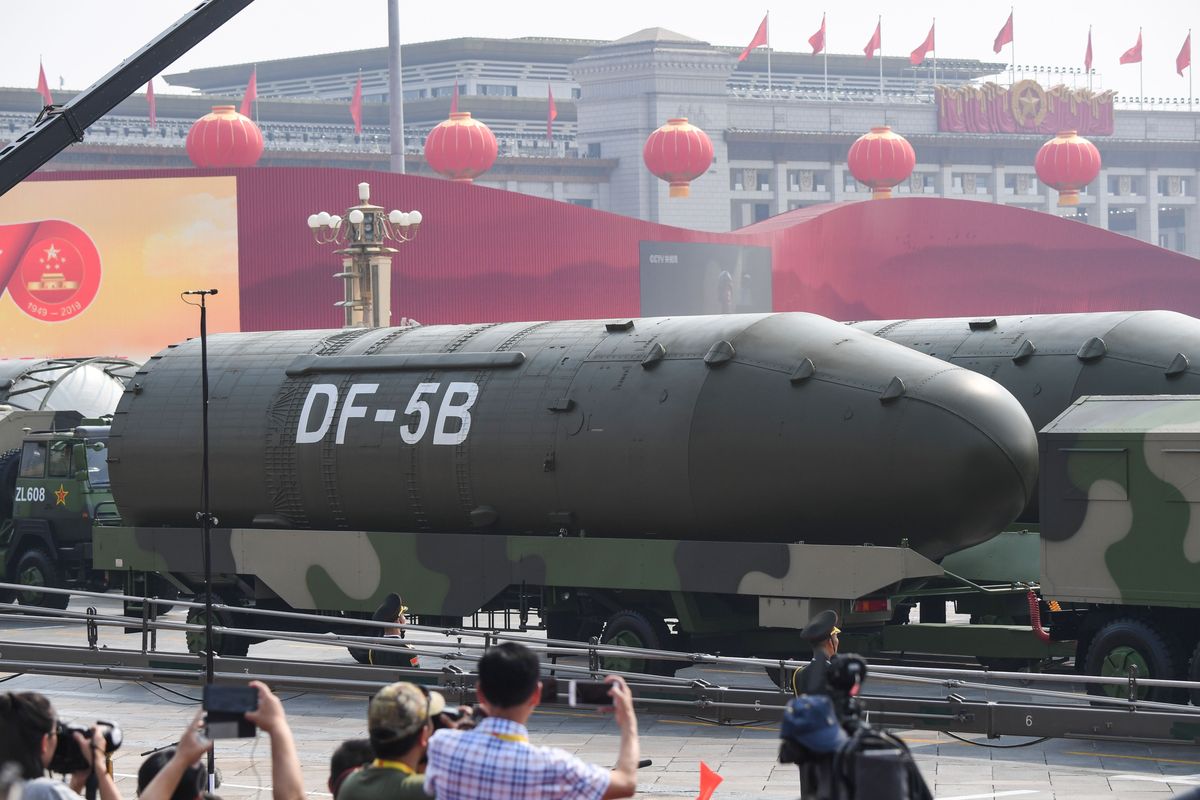OPINION — “It is likely that current Chinese war plans will include: emerging technologies to try and blind U.S. intelligence networks and silence our ability to communicate with forward forces, malicious cyber activity to weaken our critical infrastructure in order to both paralyze our military mobility and to bring America’s economy to a standstill, and conduct a disinformation campaign to try and freeze national security decision making.”
Those are among the opening remarks of ret. Rear Adm. Mark Montgomery, (a Cipher Brief Expert) who appeared last Thursday before the House Armed Services Subcommittee on Cyber, Information Technologies and Innovation at a hearing devoted to “The Future of War: Is the Pentagon Prepared to Deter and Defeat America’s Adversaries?”
Montgomery’s statement and testimony provide a current way to look at the U.S.-China military balance, a subject of greater interest since the downing of Beijing’s intelligence-gathering balloon February 4, and the three other objects shot down last Friday, Saturday and Sunday.
Montgomery, whose last Navy post five years ago, was as Director of Operations, U.S. Pacific Command, has since served two years as Executive Director the U.S. Cyberspace Solarium Commission and currently is Senior Director of the Foundation for Defense of Democracies’ Center on Cyber Technology and Innovation.
He said the U.S. military currently “relies heavily on precision-guided munitions, the ability to conduct large-scale mobility and sustainment [logistics] operations, and extensive intelligence collection capabilities to deter and defeat adversaries.”
Faced with that, Montgomery went on, “The Chinese have spent the last 25 years working this problem, investing in asymmetric weapons, sensor systems, using emerging technologies to neutralize America’s operational superiority and they’ve reduced the ability of U.S. forces to rapidly detect, track and kill the adversary.”
Montgomery proposed several steps to meet China’s challenge.
It's not just for the President anymore. Are you getting your daily national security briefing? Subscriber+Members have exclusive access to the Open Source Collection Daily Brief that keeps you up to date on global events impacting national security. It pays to be a Subscriber+Member.
The first was to increase procurement of long-range, anti-ship weapons (LRASM) which Montgomery said would “allow U.S. airmen to stay at a relatively safe range and destroy the Chinese Navy.” He added that in most unclassified war games he had participated in, “the U.S. forces required 1,000-to-1,200 of these weapons. Unfortunately, the current U.S. inventory contains less than 250 of these missiles, and the Department of Defense has been comfortable procuring between 38 and 88 of these a year for the past five years.”
The weapon he was talking about is Lockheed Martin’s LRASM, which has a range of more than 200 miles, has stealth qualities, is jam resistant and designed to locate targets with onboard sensors rather than relying on guidance from a drone’s sensors or another ship.
According to details published by militaryaerospace.com, the LRASM “seeker and guidance system integrates jam-resistant GPS and inertial navigation sensors (INS), an electro-optical imaging infrared seeker with automatic scene and target-matching recognition, a data-link, passive electronic support measures (ESM) with passive radar homing, and radar warning receiver sensors.”
Artificial Intelligence (AI) software, according to militaryaerospace.com, “combines these features to locate enemy ships and avoid neutral shipping in crowded areas. The missile automatically disseminates target RF [radio frequencies] and infrared emissions data, and classifies, locates, and identifies these emissions [from the target vessel] for planning its path of attack.”
The LRASM's data link enables other systems to feed the missile a real-time electronic picture of the battlefield and enables several of the missiles to work together by sharing data to coordinate an attack in a swarm, according to militaryaerospace.com.
As for faster delivery, it has been a long development process for the LRASM, which with more sophisticated autonomous targeting capabilities, has begun to replace the Navy’s Harpoon anti-ship missile that had been in service since 1977. Serious testing from different aircraft and Navy ships began in 2013, and by 2017, Lockheed Martin got a production contract for the first 23 LRASMs.
At Thursday’s hearing, Montgomery said that because “sinking ships in a Taiwan Strait contingency must be a priority,” the U.S. also needs more aircraft than the Air Force B-1s and Navy F-18s now capable for launching these LRASMs. The missile can also be deck-launched from a vertical launch system on a Navy destroyer.
Montgomery said the Navy has plans to place them on P-8 surveillance aircraft, the Air Force on B-52s, and that Lockheed has indicated the Air Force’s F-35s will be made capable of carrying its LRASM.
During the question session, Montgomery said that Taiwan had been approved for receiving the land-based Harpoon anti-ship system back in 2020, along with M142 High Mobility Artillery Rocket System (HIMARS) launchers. But “new design” Harpoon system was not expected until 2027. He then pointed out that when Ukraine had need for anti-ship cruise missiles to deal with the Russian Navy on the Black Sea, Ukrainians went to work with Boeing, the Danish Army, and the U.S. Navy “to ‘MacGyver’ a cobbled-together [Harpoon land] launcher system.”
Montgomery went on, “Clearly a similar ‘MacGyver’ approach can and should, be taken by Boeing and the U.S. Navy to ensure that a key partner [Taiwan] has the weapon systems needed to deter Chinese action sooner than seven years after they ordered it.”
Among other needs for defense against China specifically regarding Taiwan, Montgomery listed advanced defense capabilities against aircraft and cruise, ballistic and hypersonic missiles; pre-positioned munitions and weapons systems in Taiwan; training and military exercises with Taiwan air and naval forces and positioning in allied countries surrounding China of U.S. so-called Deployable Air Base Systems.
While the fiscal 2023 National Defense Authorization Act contained $10 billion in grants for Taiwan to buy U.S.-made weapons — $2 billion per year over the next five years — the fiscal 2023 Omnibus Consolidated Appropriations Act only permits Washington to provide up to $2 billion in direct loans to Taiwan under the Foreign Military Financing Program, rather than grants.
At a Senate Foreign Relations Committee hearing on U.S.-China Policy also held last Thursday, Deputy Secretary of State Wendy Sherman testified that last year, there were 13 different military sales to Taiwan including F-16 munitions, spare parts for the Taiwan Air Force, Army and Navy, and continued support for Taiwan’s radar program. Since 2019, Sherman said, the U.S. has recorded $21 billion in arms sales to Taiwan.
She added, “We believe we should help them in asymmetric weapons capabilities, help them train and integrate their reserves, and make sure they have mobile and agile systems.”
For example, last month, CAE USA Inc., Arlington, Texas, was awarded a $50 million contract for an F-16 training simulators program for the Taiwan Air Force. In December, Raytheon was awarded a $412.6 million contract to sustain the Taiwan Surveillance Radar Program through 2027. Also in December, Raytheon also received a $60 million contract a portion of which is to sustain on Taiwan its Phalanx close-in, turreted weapon system that can identify, track, and engage targets such as cruise missiles and small drones and is used to protect fixed sights just as it does air bases.
The Cipher Brief hosts expert-level briefings on national security issues for Subscriber+Members that help provide context around today’s national security issues and what they mean for business. Upgrade your status to Subscriber+ today.
The situation around the time lag related to Taiwan can be seen in the 2019, $2.2 billion purchase that included 108 M1A2 Abrams tanks along with 250 Stinger missiles, armored recovery vehicles, heavy equipment transporters, and an assortment of machine guns, munitions, smoke grenade launchers, tank engines and transmissions and communications equipment.
In 2021, the U.S. sent personnel to Taiwan to inspect the nation’s maintenance capabilities, training grounds, defensive positions, tank driving simulator purchasing, and guidelines for tank operation. The first two Abrams tanks for training arrived in March 2022, with 38 tanks to be delivered in 2024, 42 in 2025, and 28 in 2026, according to Taiwan’s Ministry of National Defense.
Apparently, the General Dynamics plant in Lima, Ohio, where the tanks are assembled, produces only 12 tanks per month, and new ones have also been purchased by Poland. In addition, the prospect that Abrams tanks are also in line to be sent to Ukraine, may have also complicated the delivery situation.
For example, Sen. Josh Hawley (R-Mo.) last December 6, wrote to Secretary of State Antony Blinken of his “concern about reports that U.S. arms transfers to Ukraine are impeding our ability to prevent a war in Asia by supplying Taiwan with the weapons it needs to deter a Chinese invasion.”
It had to be explained to the Senator that for the most part, Ukraine’s needs are being satisfied by taking weapons, such as Abrams tanks, from existing stocks and not from those coming off assembly lines.
One other issue needs mentioning. Military training and exercises with Taiwan forces, that proved so important with Ukraine troops, remain a problem.
Adm. Montgomery told the House subcommittee, “The United States has not exercised with the Taiwan air and naval forces in theater in nearly 40 years. This failure to train together has left U.S. and Taiwan forces at the lowest level of operational partnership — ‘deconflicted’ — which basically means your forces stay over there and our forces will stay located over here. To effectively counter Chinese military moves, the United States and Taiwan need to raise their level of operational partnership to ‘coordinated’ or even ‘integrated.’”
Here is where the 1979 Taiwan Relations Act, which governs the so-called U.S. One China policy, comes in. While the act does permit Washington to “make available to Taiwan such defense articles and defense services in such quantity as may be necessary to enable Taiwan to maintain a sufficient self-defense capacity,” it has had the effect of limiting some training and military exercises.
Although Taiwan fighter pilots and others receive training in the U.S., and American military teams have observed Taiwan’s military capabilities and exercises, nothing has existed on the level of that takes place regularly with South Korea and some other countries in the Indo-Pacific region.
Congress passed a sense of Congress provision in the fiscal 2023 Defense Authorization Act calling for Joint Exercises with Taiwan, but that’s as far as it went.
While on occasion, American Special Forces and other U.S. military personnel have carried out training missions in Taiwan, the Defense Department historically since 1979, has not disclosed details or confirmed any such deployments.
Even that inhibition may vanish if China further expands its anti-Taiwan or anti-U.S. open military activities.
Read more expert-driven national security insights, perspectives and analysis in The Cipher Brief













